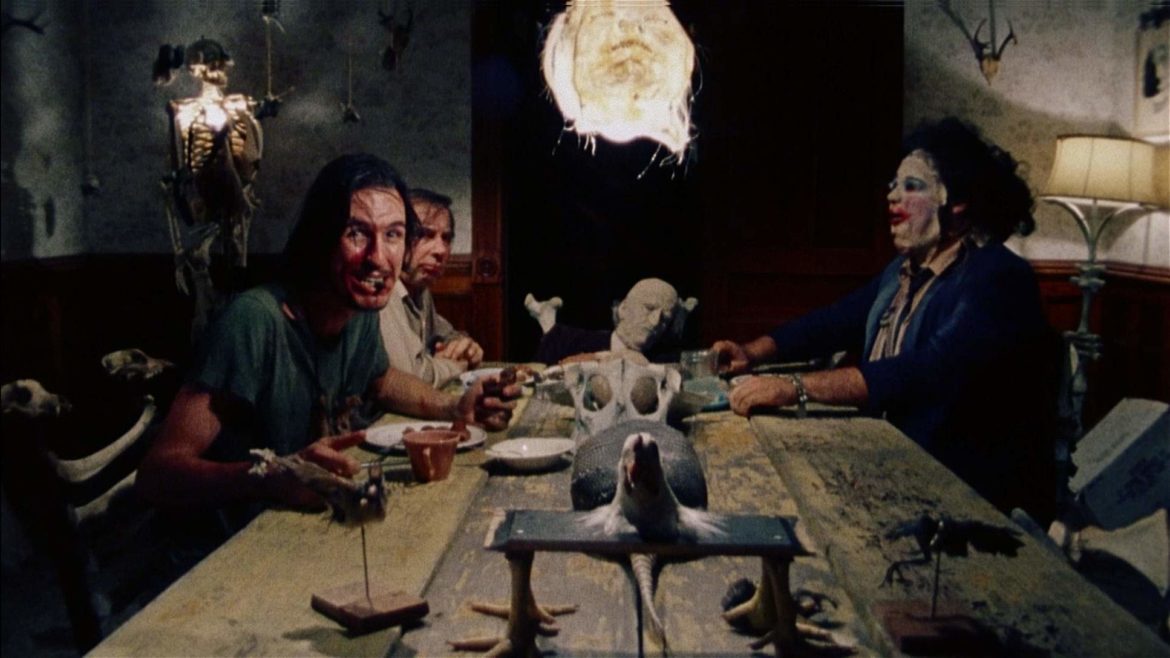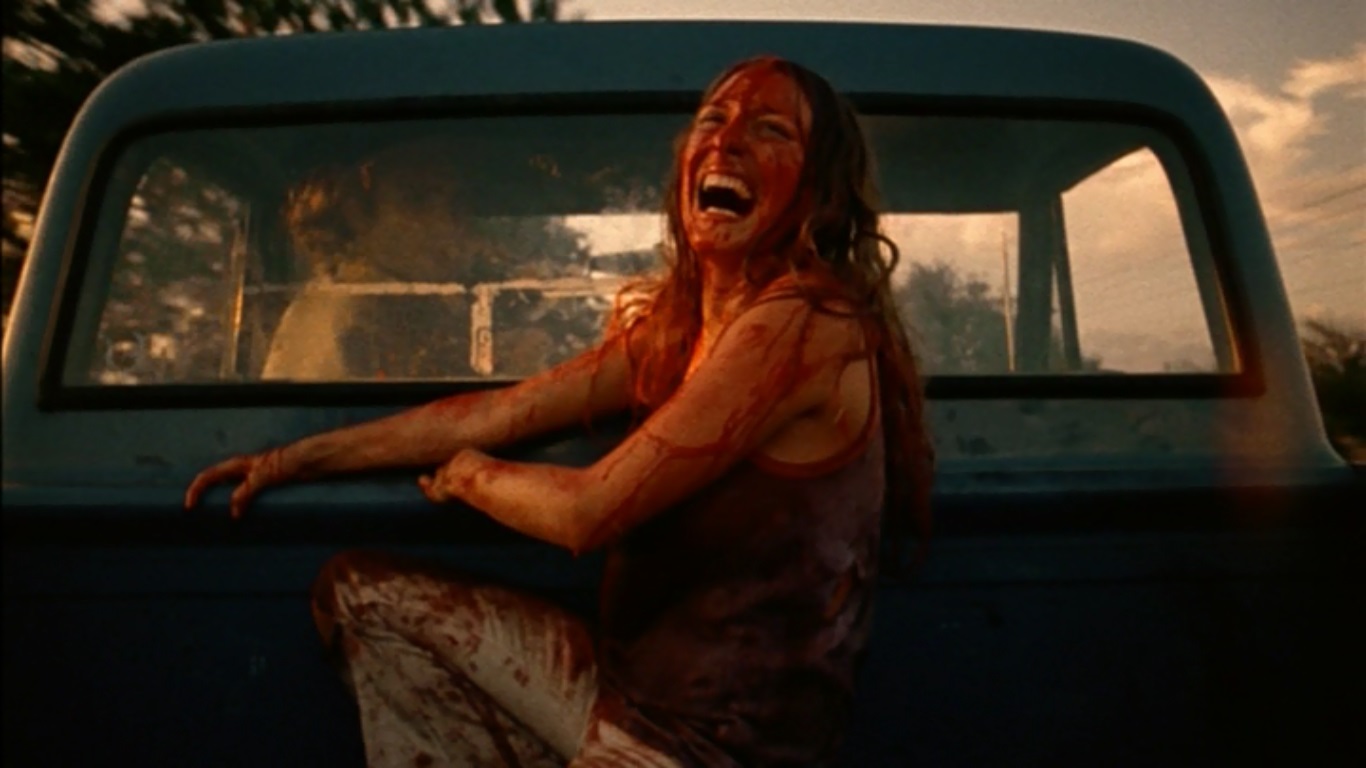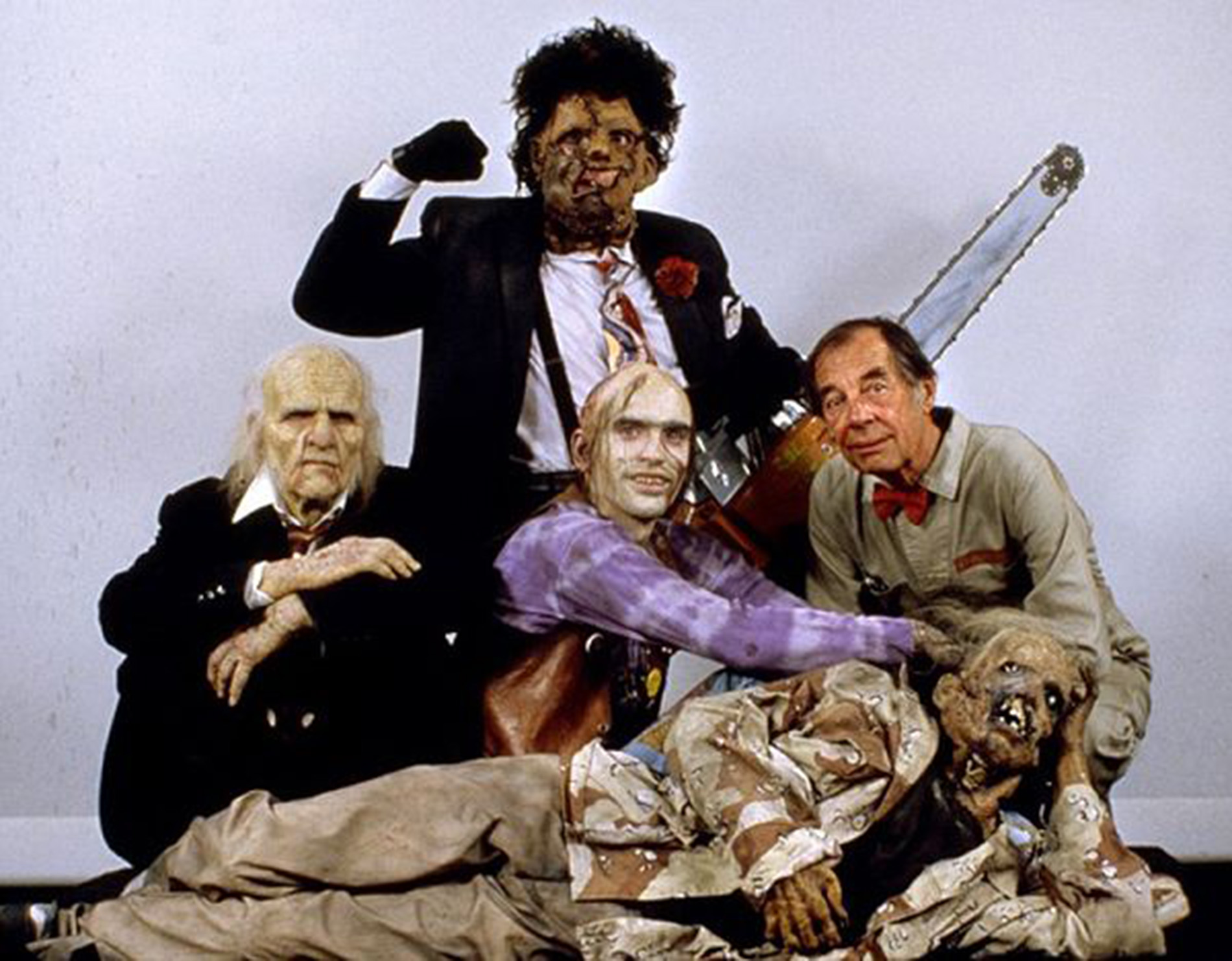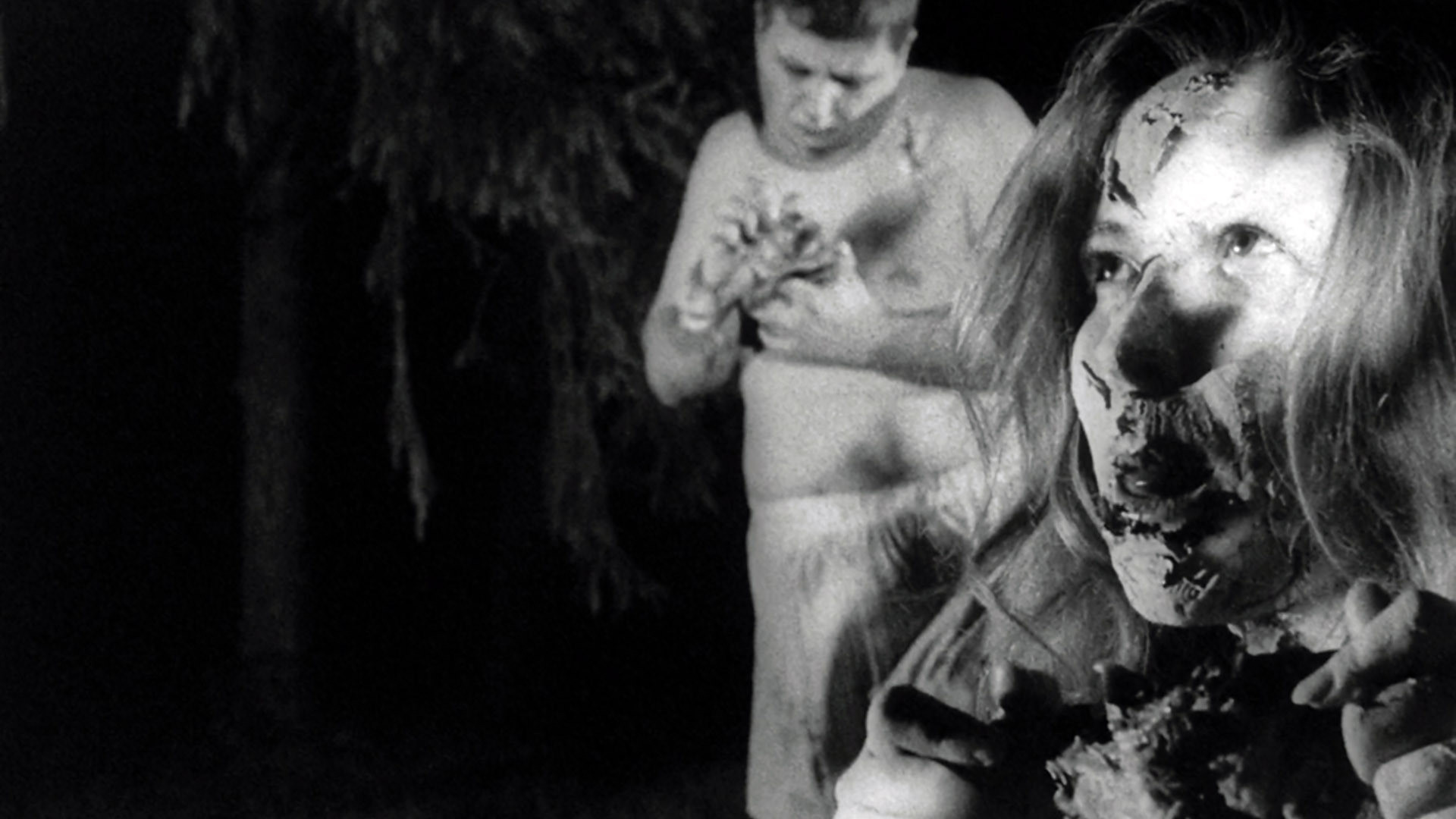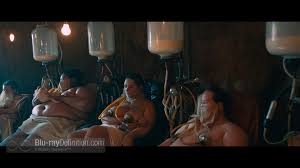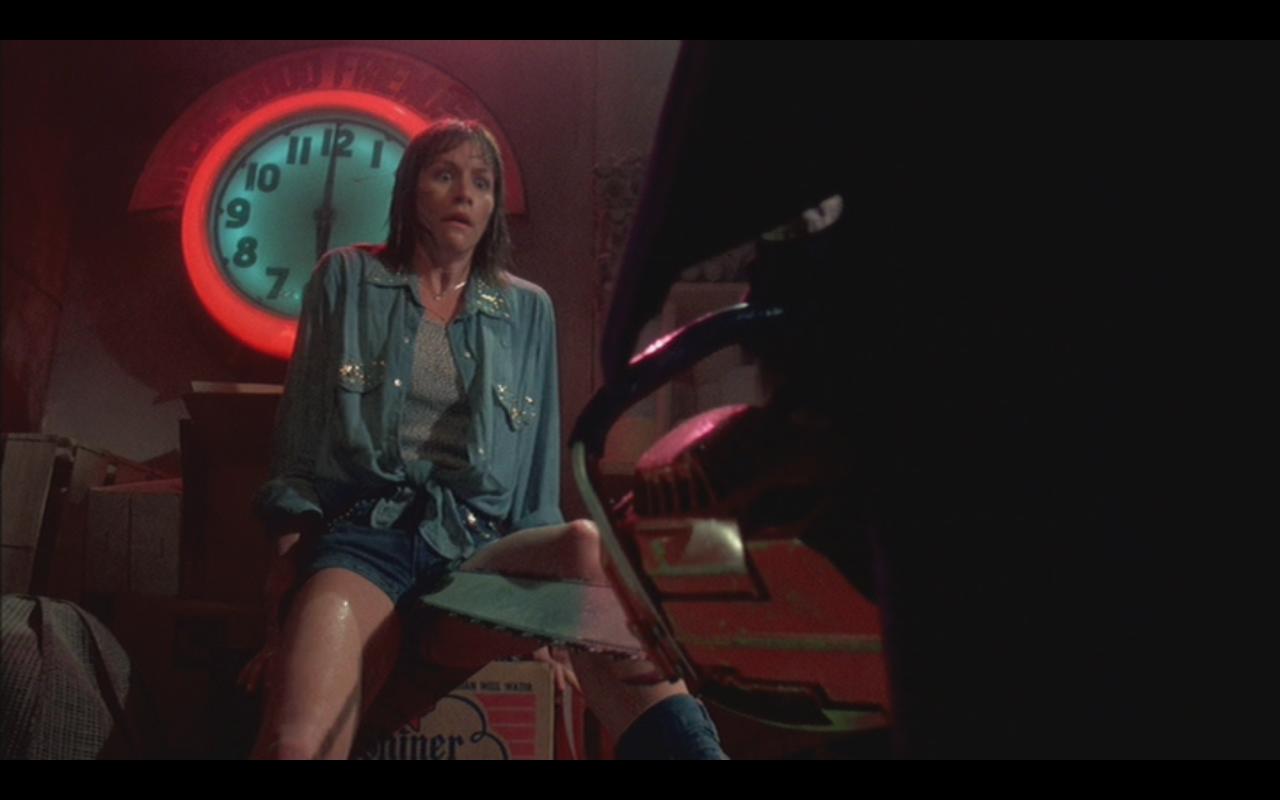A recent episode of the excellent We Love To Watch podcast focused on Motel Hell, a quite poor film with fascinating subtexts. It got me thinking about the prevalence of animal rights themes in film, and in horror specifically. Horror’s fixation on the notion of the human and the nonhuman provides a kind of secret key to understanding an unease at the root of modern existence.
There is no shortage of examples. The most famous are probably Tobe Hooper’s The Texas Chainsaw Massacre (in which a girl is impaled on a meat hook by ex-slaughterhouse workers turned cannibal during an economic downturn) and its Cannon Films-produced sequel, which drops the subtext for comedy and, instead, features its villainous protagonists winning chili cook-offs with their stews of murdered victims.
“We love this town, because this town loves meat!” Drayton Sawyer exclaims. (Lest we miss the point, his weasel-faced portayor, Jim Siedow, is credited as “The Cook”.) Cleverly, Texas Chainsaw 2 also mapped this vision of cannibalistic body horror onto mainstream films, in a comedic jab implying horror exists everywhere.
We could rattle off dozens more: Hostel, episodes of “Buffy” and “Angel”, Troll 2, Night of the Living Dead and really any treatment that blurs the line between human and nonhuman exploitation. The more interesting thing — to me, as a vegan cinephile — is why this should be so. It’s not as though the makers of all these films and stories are dedicated animal rights activists. Yet the theme won’t seem to die, as it were.
There are some easy answers. The kinds of vulnerability, powerlessness, and terror embodied in many of these things find a recognizable analog in human treatment of the nonhuman, and the natural world more generally. (“Treating x like a piece of meat” is a pretty standard thing to say.) And it is not hard to see the appeal of rerouting the narrative: “Imagine if you were the livestock!”, basically. Pretty scary, and evocative. Such treatments foreground our complicity but place us in a position we rightfully find terrifying.
That powerlessness, and the instrumental use from which it gains its power to terrify, can become an open-ended metaphor for any and all oppression, too. Think of the clear link between the treatment of animals and women, as embodied in the Texas Chainsaw films, or the specter of race haunting Night of the Living Dead, a film about America eating itself as much as a boundary-blurring discourse on bodies.
Still, time and again, it’s our animality, and a latent fear that we are doing grossly wrong by the world, that seems to pulse throughout horror and sci-fi history. The notion that the chickens will, as they say, come home to roost.
This can be ridiculous or deep, played for laughs or scares. But it speaks to a deep unease felt by mainstream society as much as by my beloved vegan fringe. Hostel is not a terrific movie, and Eli Roth is a mammoth pain in the ass, but it traffics in these tropes, imagining a world of torture-for-hire that resembles nothing so much as a farm constructed out of imperialist urges. Mad Max: Fury Road literalizes the notion of human dairy farms, where subjugated pregnant women are milked like the tortured sows of this world. (“We are not things!” is it’s rallying cry.) The young woman dangling on Texas Chainsaw‘s meathook is both startlingly disturbing and disturbingly familiar. We know what these things mean, even if we can’t say it out loud.
These images occur so frequently that we can become immune to their power, dismiss them as tropes from a disreputable genre deployed for cheap scares. But I’d suggest instead that they tap into a sense of discomfort, latent or not, with the real horrors we’re frightened to name. That’s part of horror’s appeal. Coming in from an oblique angle, it can name the horrors we live with and engage in: patriarchy, racism, and essentially instrumental use. There are few better ways to render these unpalatable truths than through images drawing on our treatment of animals.
Make no mistake: I consider our treatment of nonhuman animals to be nothing short of a real-life horror story. And so I’m open to charges that I’m bending analysis to suit my politics. Maybe so. But watch one of these films and tell me I’m completely wrong.
The nexus of vulnerability, fear, instrumental use, and single-minded fixation of psychopaths forms the center of horror cinema. As it happens, it also defines our real lives.
Or maybe not. Maybe it’s a just a weird coincidence.

